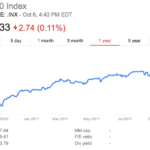
Classic Wall St. Listening to a bunch of Wall Street people talk about the Fed is like an American listening to Italians having a conversation. The American might be able to pick up on some words like “problema” but won’t understand almost anything else. Whether you’re in finance and use these terms all the time without really knowing what they mean (like me!), or if you’re sick of hearing your boyfriend use them, I’m going to break it down for you:
I recently published an article on bitcoins and explained high level what The Federal Reserve is (aka the U.S. Central Bank) so check it out if you need a refresh.
“The Fed” (because if you’re in finance, you obviously don’t call it the Federal Reserve) has a bunch of roles and responsibilities, but the one we’ll focus on today is its role to conduct monetary policy (another term that isn’t 100% intuitive to understand!)
Think of monetary policy as different levers the Fed can pull to promote three things (which I took directly from their website, so their words, not mine!)
- Maximum employment, because obviously the more people employed in the U.S. the better
- Stable prices, because if prices suddenly skyrocket (high inflation,) nobody can afford to buy anything
- Moderate long-term interest rates, this is what impacts your mortgage rates, deposit rates, and any other borrowing costs.
There are traditional and non-traditional (ever heard of “quantitative easing”) levers that I can explain in another post but all you need to know is that, its complicated. But, to get back to the original question, when they say “Yellen seemed a little more dovish today” WHAT THE F@*# do they mean?
When Yellen is Doveish…
She is feeling “looser” on monetary policy and looking to further stimulate the economy by pulling one or a variety of the available levers to likely lower interest rates. Why would lower interest rates stimulate the economy, you might ask?
- Lower interest rates make the cost of borrowing cheaper. Think, this impacts your mortgage rates and line of credit rates. When people borrow, they are typically buying things. Let’s take houses as an example. When rates are higher, the monthly cost of your mortgage is higher, so you may take out less debt and buy a less expensive home. If rates are lower, your cost of borrowing is a cheaper, so you may feel more comfortable taking on more debt and buying a more expensive home.
- Lower interest rates make it cheaper for municipalities to take on debt. If your local government has access to cheaper debt, it becomes easier for them to build things like new roads.
- Lower interest rates make your deposit accounts really unattractive. If you’re earning close to 0% in your savings account, why keep it there? When rates are very low, deposit accounts and bonds become less attractive and investors are more inclined to invest in other asset classes (like the stock market!)
Sounds pretty good, right?
Why would Yellen ever be Hawkish, then?
Let’s play out this story, more investment in companies, more borrowing, more spending. Companies expand and start hiring more and more people. The labor force grows and the amount of unemployed people shrink. It becomes more competitive to hire people and wages go up (still sounds good…) People are making more and more money, so companies start to raise prices. At first, this is okay, but overtime, too much inflation can be a huge problem. Imagine going into a grocery store for a gallon of milk one week and its $3.50, and the next its $4. Imagine what it would be in a month. This causes consumers to panic and hoard goods and stop spending. If it costs more and more dollars to buy the same things week after week, your dollars become worth a lot less – and this can be disastrous to an economy at large scale.
When the Fed is Hawkish, they are tightening on monetary policy and likely raising rates to keep inflation in check and prevent this from happening.
Back to the original question
So the world is waiting on the edge of their seat (well, maybe not the world, but definitely the Wall Street geeks) to see when and how rates will continue to rise. How fast will it happen, and over what period of time? Janet Yellen, the Chair of the Fed, keeps a very open dialogue with the public about their plan to raise rates (which will happen inevitably.) At today’s meeting, she was slightly more “dovish” by saying that the Fed may have made an error in assessing the labor market (maybe its not as strong as they thought) and inflation trends (maybe its not rising as much as they thought.) BUT – she did say that they were still on track for a small rate hike in December, so TBD.
That was a mouthful.
Share the post "Wait, so what exactly is…. “dovish” monetary policy"
Related Posts





